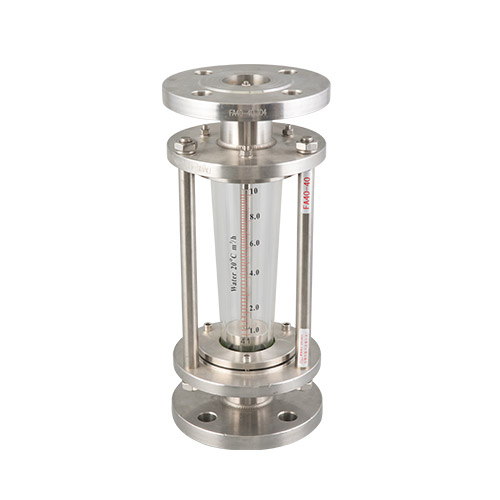Calibration and adjustment of ultrasonic flowmeters include: calibration of the flow display secondary meter electronics and calibration of the correct installation of the transmitter. The installation of the adjustment transducer is to make the sound signal of the transmitting transducer propagate in the fluid and the receiving transducer to receive normally. For an ultrasonic flowmeter with a measuring pipe section, the relative positions of the transmitting transducer and the receiving transducer are fixed, so the adjustment is relatively simple, mainly for the electronic circuit of the secondary instrument.
The calibration of an acoustic flow meter varies depending on the measurement circuit of the instrument. The specific calibration steps should be carried out in strict accordance with the requirements of the product manual, but generally involve the following aspects.
1) Zero adjustment When the actual flow is zero, the flow of the instrument is also zero. Typically, zero adjustment is done through the automatic zero adjustment function. However, for high precision measurements, it is possible to stop the automatic zero adjustment function and set the zero offset on the instrument. For subsequent measurements, the instrument will automatically output the value after deducting the zero offset.
2) Damping settings.
Appropriate damping settings can be used to accurately observe the evolution of the measured value or to obtain the average value of the measured value. Generally, when the automatic zero point function is working, the response time obtained is about 10 times of the damping setting time. In order to observe the real change of the measured value or to observe with a suitable shock absorber, a proper shock absorber time must be set.
3) Setting of working parameters (quantity).
The setting of working parameters (quantity) includes the setting of the setting of the analog output range (4-20mA), the setting of the setting flow rate range of the display unit, and the like.

4) Output settings under abnormal measurement conditions.
When there is no fluid in the pipeline or the fluid has bubbles and other abnormal conditions, it can be set: keep the measured value unchanged; high output; lower limit output; zero output, etc. At the same time, when the cumulative pulse is output, the output is turned off, and the internal cumulative is also turned off.
5) Setting of empty checkpoint.
The wave flowmeter can be set to output an alarm signal when there is no fluid in the pipeline (empty pipe).
6) Setting of continuous communication.
RS-232C communication baud rate, parity and parking space can be set.
7) Low flow cut off.
When the flow rate is low to a certain value, the cutting point cutting flow display can be set. Usually, the cutting point can be set between 0-0.999 m/s. When the valve is closed, due to the convection phenomenon of the fluid in the pipeline, there will be a flow display at this time, so it is necessary to set the low flow cutting function. The initial cutoff point for some devices is set at 0.01 meters per second, which can be manually modified.
8) Other calibrations such as measured value; cumulative output unit setting; time setting and status output setting are all instrument adjustment contents, which should be set according to the requirements of the ultrasonic flowmeter manual.






 English
English 中文简体
中文简体 русский
русский España
España